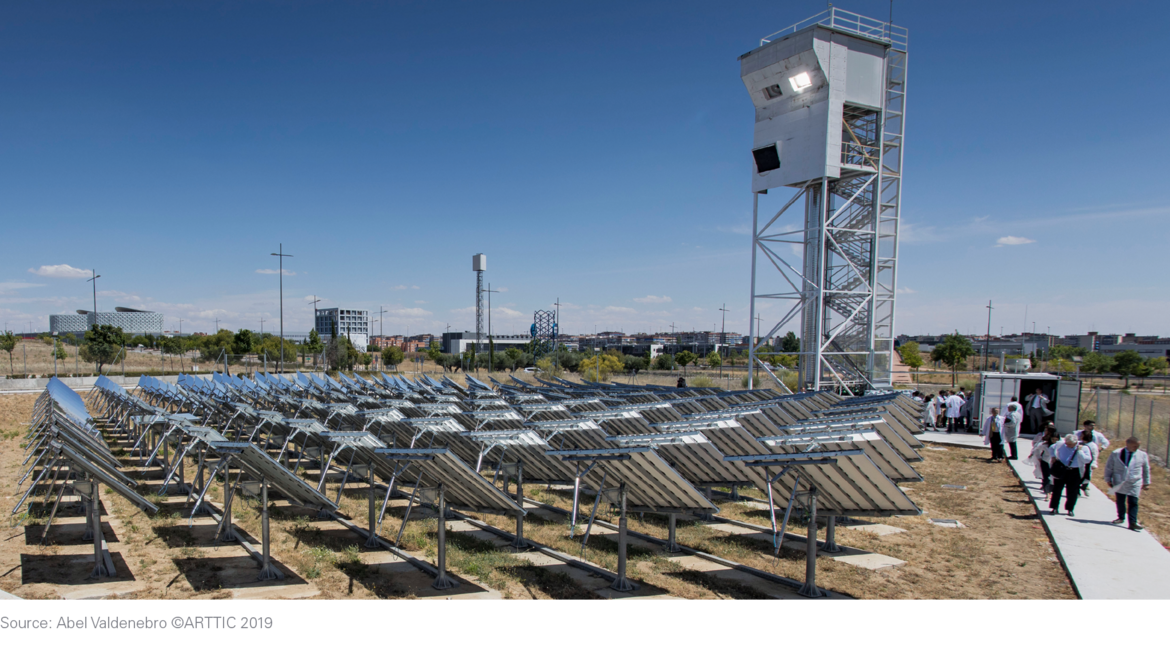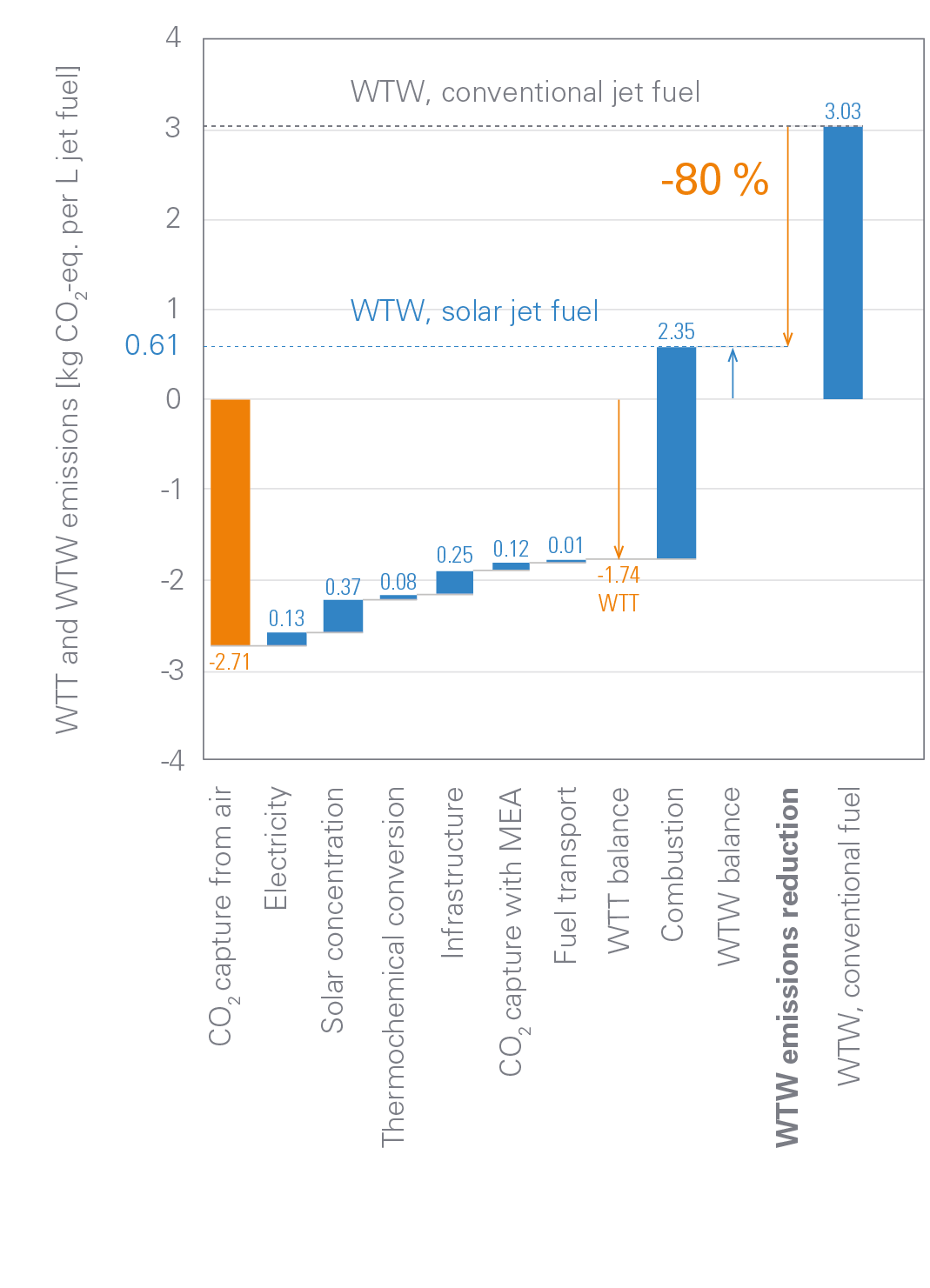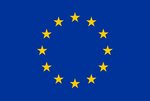Renewable fuel from air and sunlight with unlimited production potential: Together with European partners, Bauhaus Luftfahrt researches the potential of a technology that promises new ways to climate-neutral aviation.
The concept was already identified as potentially impactful by the Technology Radar in 2008 and further analysed and developed in European research alliances. In 2014, SOLAR-JET (2011 – 2015) 1 proved its feasibility for the first time in the laboratory. SUN-to-LIQUID (2016 – 2019) 2 took this technology to the next stage of development and tested it under real conditions in a solar tower system developed specifically for this purpose by IMDEA Energía and DLR. A solar reactor developed at ETH Zurich produced hydrogen and carbon monoxide from water and CO2 via a solar thermochemical redox cycle. The project partner HyGear developed a Fischer-Tropsch plant that processes this gas into kerosene on site. In 2019, this made it possible for the first time to produce kerosene from water, CO2, and concentrated sunlight under real conditions in an integrated solar thermochemical plant.
During the COP26 Conference in Glasgow in November 2021, SUN-to-LIQUID received the 22nd Energy Globe World Award in the category of Sustainable Energy Technologies, as one of the best environmental projects among more than 2000 submissions from 182 countries 3 . The award has been presented by the independent Energy Globe Foundation since 1999.
Solar thermochemical fuels could cover the world’s jet fuel demand by using less than 1 % of the world’s desert areas and are therefore considered a promising building block towards climate-neutral aviation.
SUN-to-LIQUID research plant for the solar production of kerosene
Integrated solar thermochemical plant at IMDEA Energía in Móstoles near Madrid in operation. The plant comprises a solar heliostat field, a thermochemical reactor (on top of tower), and Fischer-Tropsch conversion (in container to the right).
Emissions reduction from solar thermochemical kerosene
Net and greenhouse gas emissions from production and supply (well-to-tank, WTT) and combustion (well-to-wake, WTW) of synthetic solar jet fuel: WTW is 80 % less than conventional jet fuel (adapted from 4 ).




